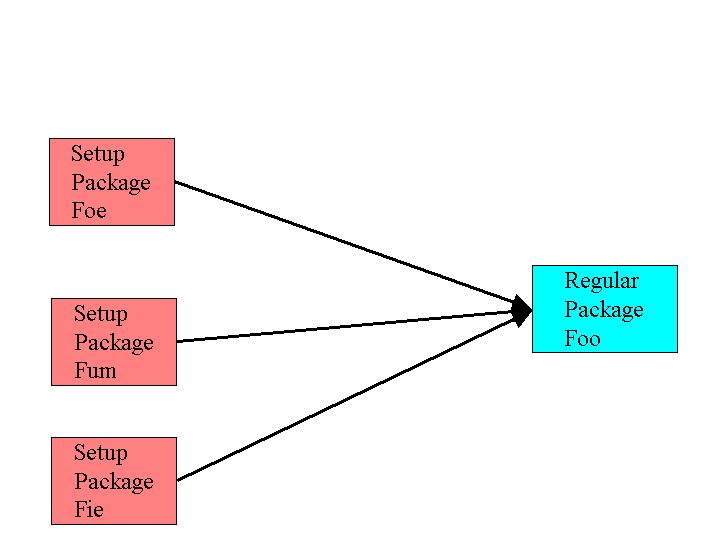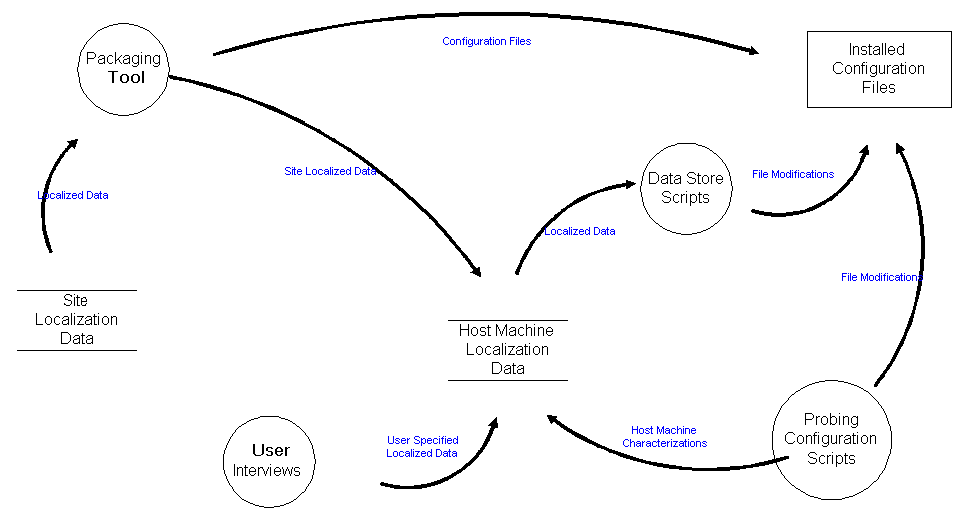| Item |
Description |
| Site Localization Data | Database or other data
stor that contains site or organization localization
data. |
| Packaging Tool | Tool that creates setup packages
from localized data |
| User Interviews | Tools that prompt software
installers for input. |
| Host Machine Localization Data | Database or other
data store that contains host specific localization
data. |
| Data Scripts | Scripts that modify configuration
files based on host local data |
| Probing Configuration Scripts | Scripts which
perform tests to determine host local data |
| Installed Configuration Files | Files used by
installed software to read in localization information |
 This arrangement provides the flexibility needed to handle the
complications discussed previously. Package Foo is seperated from
its configuration files so that either can be upgraded seperately.
The dependency to the setup package is abstracted so that
organizations can package different configuration schemes to
fulfill the requirement.
This arrangement provides the flexibility needed to handle the
complications discussed previously. Package Foo is seperated from
its configuration files so that either can be upgraded seperately.
The dependency to the setup package is abstracted so that
organizations can package different configuration schemes to
fulfill the requirement.
